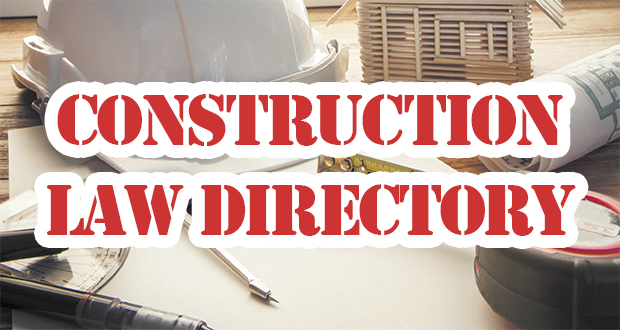Guide to indemnification, insured contracts
By: WISCONSIN LAW JOURNAL STAFF//July 21, 2015//
Take a close look at provisions on all projects

By Kevin Long
Quarles & Brady
Form contracts and invoices (often with microscopic type, riders and illogical attachments) are the bane of project managers and other construction professionals who just want to get the job done and be treated fairly — without spending all of a project’s profit on contract negotiations.
However, indemnification provisions merit review on all projects regardless of size. In many situations, they are the most substantial provisions in a construction contract. The complete picture of exposure from indemnity provisions is not clear without an understanding of the “insured contract” provisions within insurance policies.
Indemnification
Indemnification is the mother lode of all risk-transferring provisions. It makes one party (the indemnitor) responsible for damages incurred by another (the indemnitee). Usually, the party with more bargaining power requires the indemnification and reaps most of its benefits. Owners who are fortunate enough to have several contractors who want to build for them are in a strong position to demand indemnification. General contractors will demand it of subs and so on.
Sometimes you do not have a choice. Other times, you can negotiate a middle ground. Occasionally, you just need to walk away. Identifying the scope of these provisions will help construction professionals make these decisions.
In short, avoid “broad form,” or Type I, indemnification if at all possible. This provides that the indemnitor pays even where the damages are caused by the fault of the party receiving the benefit of the provision. Look for phrases such as “whether or not caused by or contributed to by the Indemnitee.” That is a red flag that you are responsible for anything that goes wrong, even if you didn’t make a mistake.
What is referred to as the “intermediate form,” or Type II, provides that one who is actively negligent will indemnify others who are only passively negligent. Think of passive negligence as the failure to catch someone else’s mistakes on the job site. In the intermediate form, the entity on the hook at least needs to make a mistake to be held liable.
The narrow form, or Type III, is the most common form. The hallmark of this form is the phrase “but only to the extent of the negligence of the indemnitor.” This means “I only pay for my negligence.”
Insurance effects: Remember the words ‘insured contract’
Indemnification is a contract remedy. Many construction professionals and even lawyers mistakenly believe that contract claims can never be covered by insurance. Actually, particularly in Wisconsin, they often are covered. One insurance provision that supplies coverage is known as the “insured contract” provision and is part of many standard commercial-general-liability policies. In general, a CGL policy will provide contractual liability coverage for liability assumed in a contract as long as (1) the bodily injury or property damage occurs after entering into the contract, and (2) the liability is assumed in a hold harmless or indemnity agreement that falls within the definition of “insured contract.”

An insured contract is typically any contract pertaining to the named insured’s business under which the business assumes the tort liability of another. Tort liability means liability imposed other than by contract. Many indemnification clauses qualify as insured contracts. If you are asked to sign an onerous indemnification agreement, it may be worth your while to call your insurance agent and ensure that your liability under that agreement is covered under your standard CGL policy. A fairly inexpensive rider might provide you with the coverage you need.
Similarly, when a claim is tendered to you under an indemnification provision, do not assume that it will not be covered by insurance. Always reach out to your agent and offer a defense of the claim citing any and all potentially applicable primary- and excess-insurance policies. If an insurer denies the defense, get in touch with a lawyer with expertise in insurance recovery.
Construction contracts with indemnification provisions merit close scrutiny. Understanding the interrelationship between these provisions and standard insurance policies can help contractors and other construction professionals get the job done while being treated fairly.
Kevin Long is the National Chair of the Commercial Litigation Group at Milwaukee-based Quarles & Brady and works closely with both the firm’s Real Estate and Construction and Insurance Recovery Teams to meet the needs of clients throughout the construction industry.
Legal News
- Wisconsin joins Feds, dozens of states to hold airlines accountable for bad behavior
- Trump ahead of Biden in new Marquette poll
- Bankruptcy court approves Milwaukee Marriott Downtown ‘business as usual’ motion
- New Crime Gun Intelligence Center to launch in Chicago
- Arrest warrant proposed for Minocqua Brewing owner who filed Lawsuit against Town of Minocqua
- Wisconsin Supreme Court justices question how much power Legislature should have
- Reinhart named the 2024 Wisconsin law firm of the year by benchmark litigation
- Milwaukee’s Common Council now has the most African Americans, women and openly LGBTQ members ever
- Office of School Safety Provides Behavioral and Threat Assessment Management Training Ahead of 25th Anniversary of Columbine Shooting
- Wisconsin Supreme Court to hear arguments in Democratic governor’s suit against GOP-led Legislature
- Lawsuit asks Wisconsin Supreme Court to strike down governor’s 400-year veto
- Wisconsin man pleads not guilty to neglect in disappearance of boy
WLJ People
- Power 30 Personal Injury Attorneys – Russell Nicolet
- Power 30 Personal Injury Attorneys – Benjamin Nicolet
- Power 30 Personal Injury Attorneys – Dustin T. Woehl
- Power 30 Personal Injury Attorneys – Katherine Metzger
- Power 30 Personal Injury Attorneys – Joseph Ryan
- Power 30 Personal Injury Attorneys – James M. Ryan
- Power 30 Personal Injury Attorneys – Dana Wachs
- Power 30 Personal Injury Attorneys – Mark L. Thomsen
- Power 30 Personal Injury Attorneys – Matthew Lein
- Power 30 Personal Injury Attorneys – Jeffrey A. Pitman
- Power 30 Personal Injury Attorneys – William Pemberton
- Power 30 Personal Injury Attorneys – Howard S. Sicula









